VILLAGE CARE FOR ALL:
A Vision of Neighbors Caring for Neighbors
Each of us needs different care to feel and function at our best, yet top-down cookie cutter care prevails, designed by people disconnected from us and failing to meet our many wants and needs. But village care, as we imagine it, can be custom, nimble and dynamic: designed for us from the ground up and able to respond to unplanned events and changes that occur as we age.
At Village Company 360, we aim to spread true prosperity—aliveness—through village care. Especially by fostering caring communities and economies for & by neighbors of all ages in multifamily buildings.
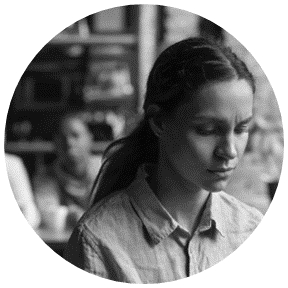
Current situation:
- Rising loneliness, social isolation and chronic disease rates across all ages.
- Younger and older people segregated from each other, causing missed opportunities for everyone.
- Fast-climbing care demands alongside care workers quitting in droves and even taking their own lives.
- Families unable to afford professional long-term care or find good-quality care providers.
- Family caregivers leaving jobs, losing wealth and facing health issues to manage care duties and costs.
- Increasing despair, which is considered a health crisis as well as national security issue.
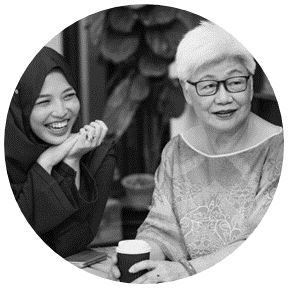
What we imagine:
- Villages allowing older adults to live in communities and caregivers to maintain at least part-time jobs.
- Villagers receiving medical care, at or close to home.
- Designing our own care from mix & match services and supports, or having a care coordinator do it for us.
- Healthcare workers starting businesses to provide services in their own neighborhoods.
- Cost savings for neighbors and less travel for workers through cluster care: home care where people living in proximity are served by one worker or team.
- Villages offering the best of community centers, like social, educational and cultural activities and events.
See Four Care Facts for more on our current situation.
Close family & friends = a village.
A super village is one comprised of caring neighbors.
Why look to neighbors for care?
“As a force in shaping our health, medical care pales in comparison with the circumstances of the communities in which we live.”1 Or, caring neighbors shape our health more than health professionals. And by living close to us, neighbors can provide services and supports quickly and conveniently.
Why include neighbors of all ages?
People of different ages bring different things to the table. Babies, for example, excel at boosting moods, while doing activities with children reduces mortality.2 Older adults are great for giving perspective and teaching skills, and younger adults are great at hosting events and helping with chores.
Why neighbors in multifamily buildings?
Multifamily buildings are efficient and convenient places to unite people. They also tend to offer housing for people across income levels, and stair-free ways that people with wheelchairs or walkers, or in strollers or on stretchers, can come and go. But villages can work wherever neighbors exist.
Our idea of village care =
Coordinated custom care with us at the center.
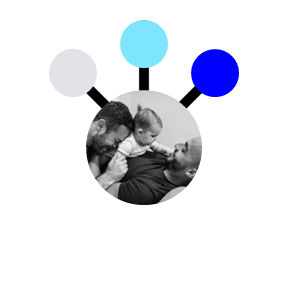
BABY JOSEPH’S VILLAGE
Parents, Nana, Auntie Barb
Baby sitter
Baby food preparer
Pediatrician
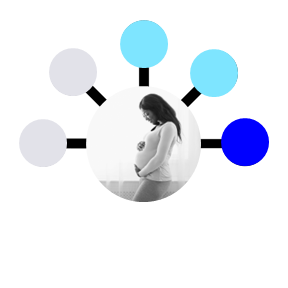
ESTHER’S VILLAGE
Nuclear & church family members
Long-distance besties
Walking club
Transportation volunteers
Massage therapist
Community diabetes educator
Obstetrician
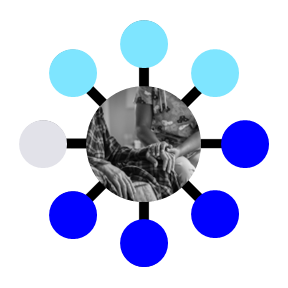
GEORGE’S VILLAGE
Wife
Poker club
Professional care coordinator
Meal Delivery Service
Cleaning & laundry crew
Primary Care Doctor
Cardiologist + her nurse
Home health aide
Custom village care will rely heavily on local resources. And neighbors—possessing a multitude of gifts, skills and interests—are among the most valuable resources of all. We imagine neighbors bolstering formal healthcare systems by providing three levels of care:
LEVEL ONE CARE:
Social & Other Supports
Individually or in groups, neighbors connecting neighbors to break bread, learn, play, exercise and more.
LEVEL TWO CARE:
General Services
Neighbors offering free and / or paid services, like cooking, cleaning, transportation and care coordination.
LEVEL THREE CARE:
Personal & Medical
Certified neighbors offering home health and nursing services as self-employed or 3rd-party providers.
Growing villages is about tending to 5 Pillars of Prosperity / Aliveness:
WISDOM :: WORK :: COMMUNITY :: HEALTH :: WEALTH
WISDOM
Adopting new ways of thinking to let go of suffering & attain more peace and joy.
WORK
Doing meaningful activities regularly, whether for pay or pure pleasure.
COMMUNITY
Forging satisfying social connections, as well as living in a favorable place.
HEALTH
Behaving in ways to maintain & improve one’s physical and mental wellness.
WEALTH
Creating confidence in one’s finances, even while making big improvements.
These pillars mean that there’s a role for everything in village growing.
In addition, …
Villages come in different shapes & sizes,
so there’s a perfect kind for anyone to start or join.
Here are the main kinds that we imagine:

TINY
Villages
Comprised of 3-5 people.

AFFINITY
Villages
Organized around a theme.

VIRTUAL
Villages
Operated from anywhere.

MOBILE
Villages
Dispatched to where we live.
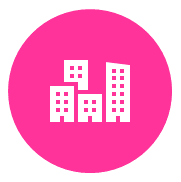
NEIGHBORHOOD
Villages
Formed where we live.
Tiny village growing is good for folks wanting to keep things as simple as possible.
Start a tiny village by making friends with two or more neighbors (exceeding 5 members is allowed 🙂). Have fun and offer help, like walking a fellow villager’s dog or picking up an item from the store. And be sure to ask for help yourself when you need it—the answer is always “no” if you don’t.
Affinity village growing is good for folks wanting to join others who love what they love.
Love singing? golfing? business building? just about anything? Start or join more than one affinity village to really pump up the prosperity in your life. Or someone else’s: if you love the idea of unsung workers feeling seen and supported, you can contribute to an affinity village focused on caring for caregivers.
Virtual village growing is perfect for anyone needing (or wanting) to care from afar.
Caring face-to-face isn’t always feasible. But consider this: Good administrative support—researching services and resources, coordinating care, applying for benefits, etc.—can profoundly improve a person’s life. Virtual villagers can deliver improvements, as a free or paid service, with as little as a laptop and phone.
Mobile village growing is ideal for business-minded types who like staying on the move.
“One day, hospitals will just be ERs, intensive care units and operating rooms. Everyone else will be treated at home.”3 Though nurses are currently barred from billing for their services, we imagine independently-owned mobile nursing teams capturing a significant share of future healthcare dollars.
Neighborhood village growing is a fit for folks wanting to advance in-home care.
Care demands are rising and caregivers are struggling. In-home care—delivered through technology and / or in-person services—can help to address both issues. Telemedicine, for example, is convenient for patients and can relieve caregivers from missing work and wages to drive someone to the doctor.
Village growing starts with imagining.
Join us on a journey to dream up and create new kinds of care.
Broken care can feel too big to handle at times, but we emphatically believe Thomas Paine:
“We have it in our power to begin the world over again.”
Paradoxically, what we think that requires from most of us is looking softly at the world but squarely at our respective corners of it. Or tending to our own villages, as it were.
If you feel moved to try your hand at helping to grow a village, visit this page to pick your path.
Thanks for reading and please share this message by sending folks to VillageCareForAll.com.
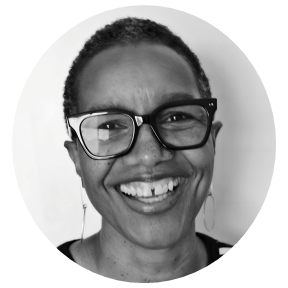
Village Care for All was brought to you by Dr. Mary-Elizabeth Harmon, scientist turned storyteller, caregiver & founder of Village Company 360.
References:
1. Robert Putnam as quoted in The Loneliness Epidemic; Health Resources and Services Administration at HRSA.gov
2. Social Frailty Index.
3. Home, Sweet Hospital; Johns Hopkins Medicine at HopkinsMedicine.org
